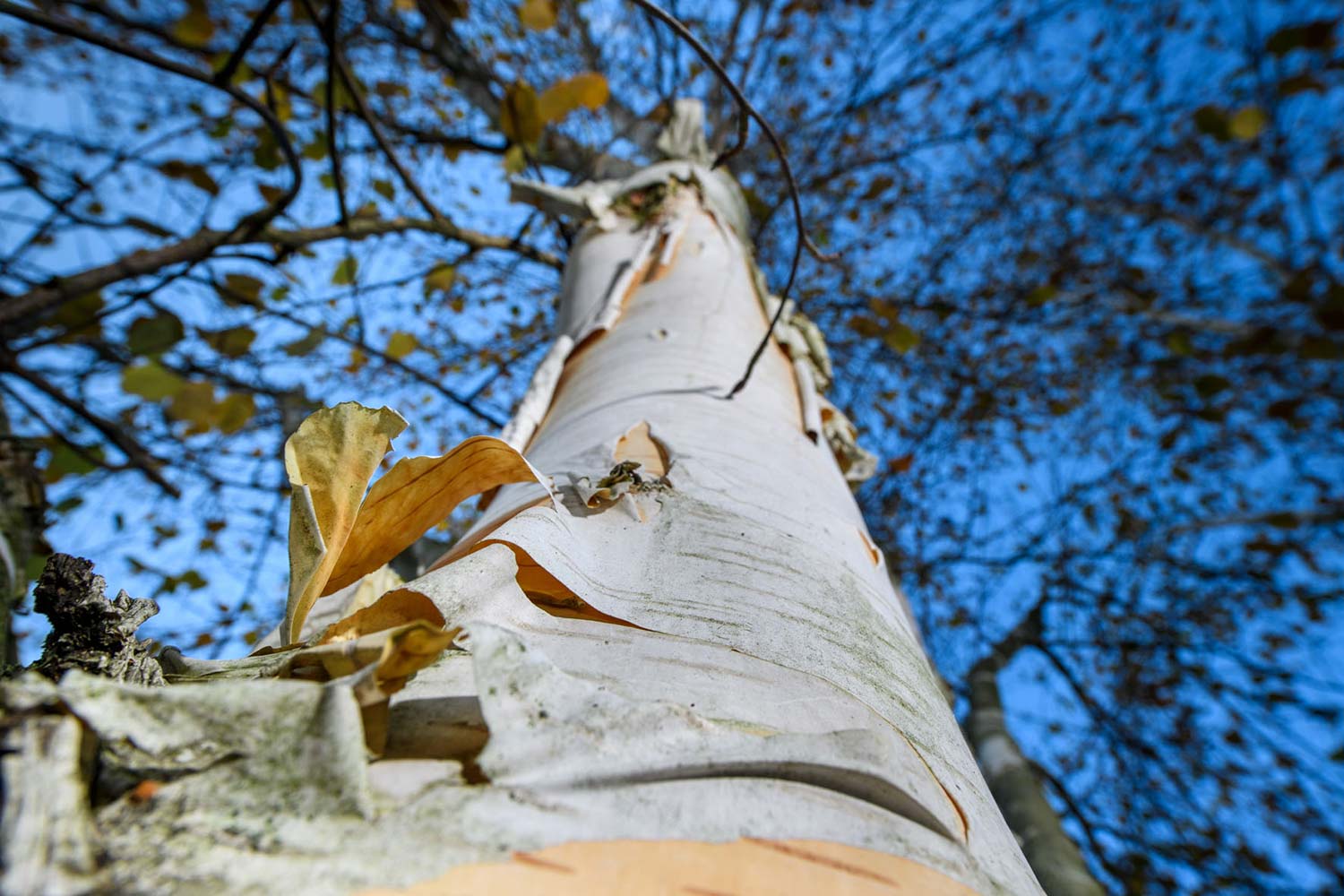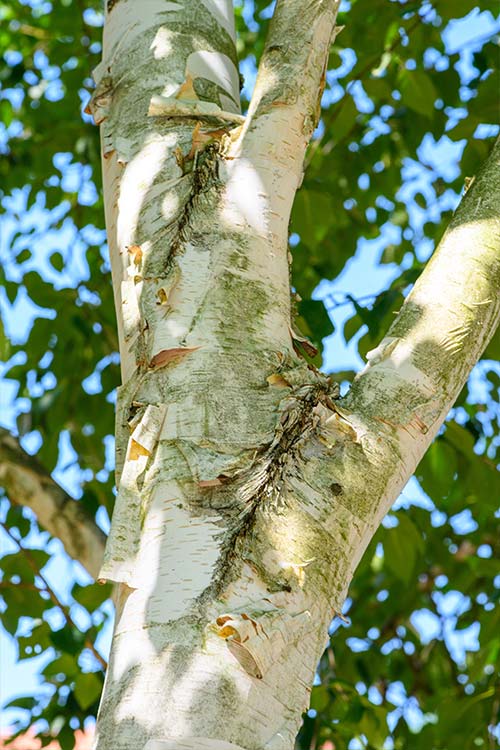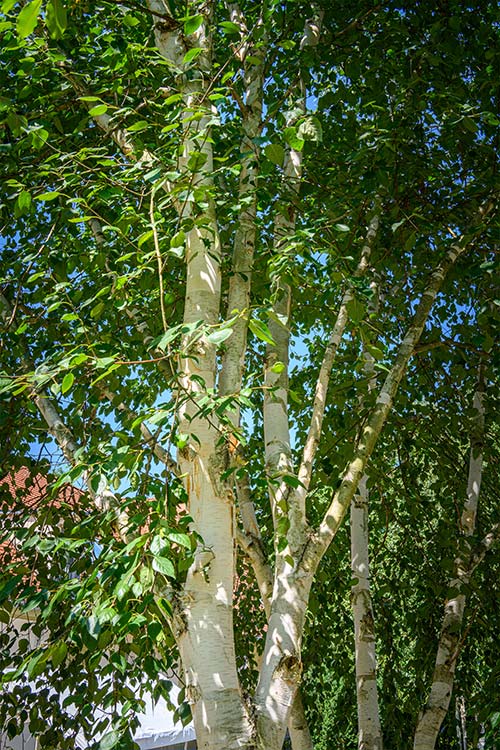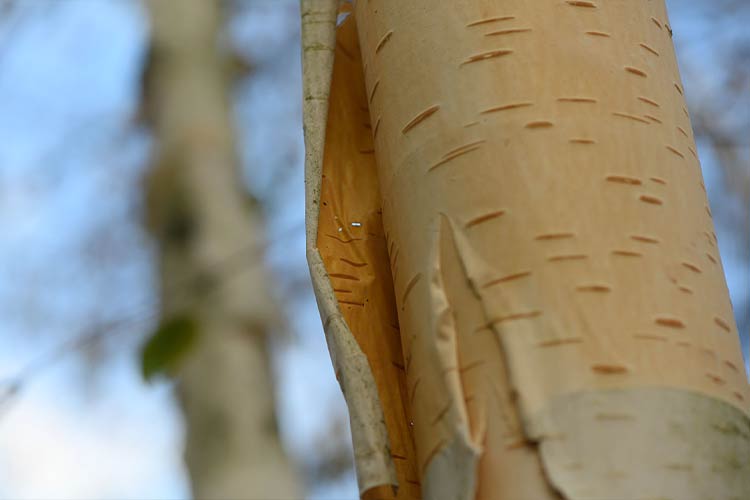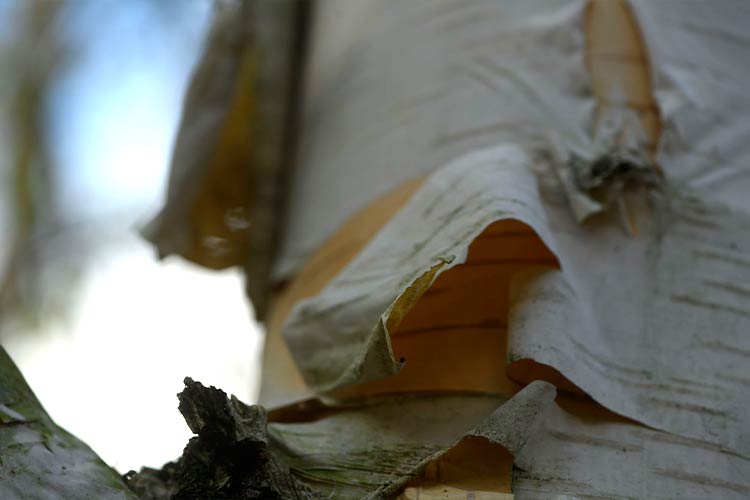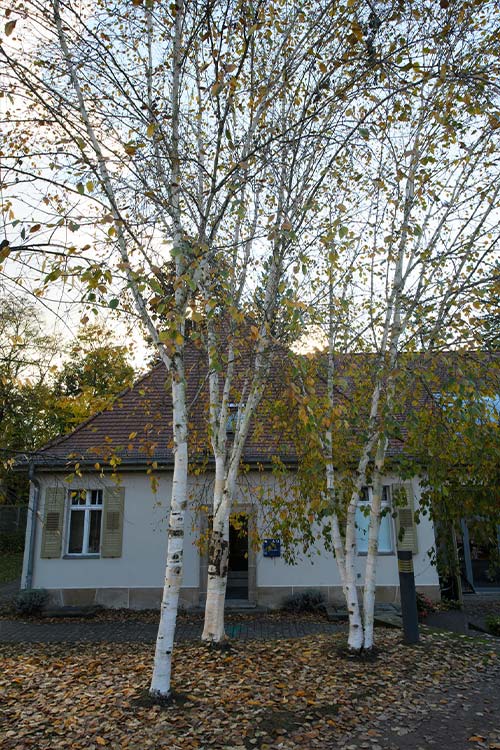10Paper birch
Betula papyrifera
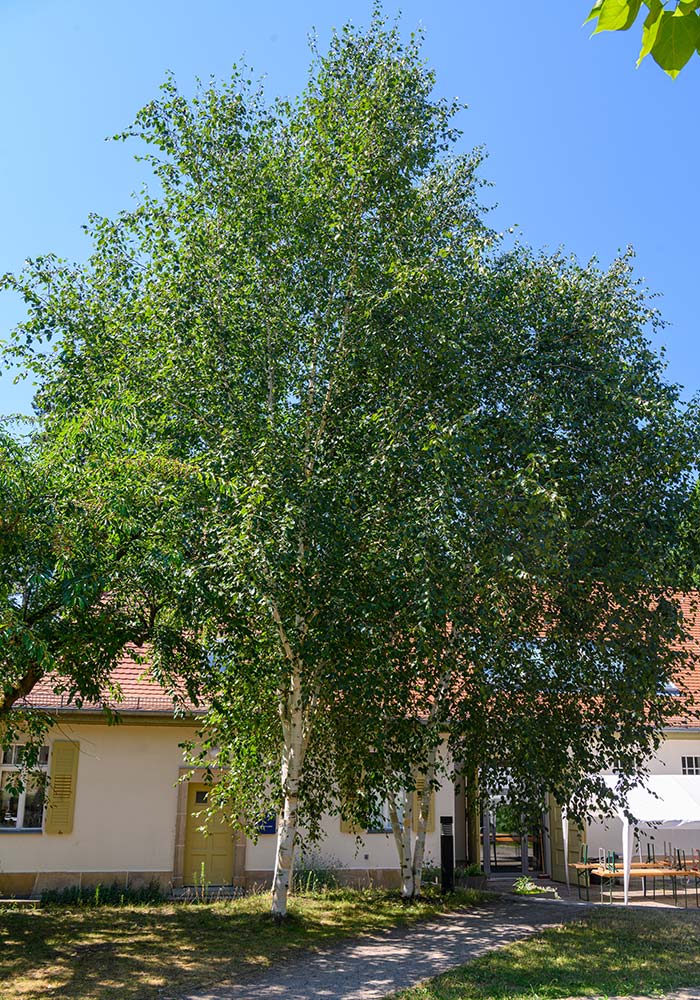
Next to the stone steps leading to the Mensa is the tenth tree on the tour, a paper birch, botanical name Betula papyrifera, also known as the canoe birch or American white birch. It belongs to the birch family or Betulaceae.
Its characteristic feature is its white shining bark. On the one hand, this gives the family its name: the word birch comes from Indo-Germanic and means something like "shimmering, or shining." This also is the basis for the names of the species. The bark of the paper birch is initially smooth. From middle age, the outer layer comes off and rolls decoratively in horizontal strips that look like paper.
The paper birch is a deciduous tree that grows about 20 meters high with a trunk that grows up to 80 centimeters in diameter.
The leaves of the paper birch are slightly larger than native birch species. They sprout as early as April, in parallel with the flowers: green-yellow catkins, which are very rich in pollen and therefore attractive to many insects. Like all birch species, it is pollinated by the wind. The small, winged seeds ripen in autumn.
The paper birch prefers sunny locations, but is comparatively hardy and suitable for any soil. It can tolerate temperatures down to -35° Celsius, making it completely hardy in the face of frost. Its roots are fine and spread shallowly like a net, so it can tolerate intermittent drought.
The original region of its distribution was North America, mainly Canada and the northern US. The main uses were found for its bark: it is said to have been used by North American natives as a writing material. Because it is waterproof, it was used to build canoes, and to make clothing and waterproof blankets.
Birch tar is also made from the bark of paper birch, as well as other birch species. In traditional remedies this is used for ointments, poultices or in baths against abscesses, eczema, psoriasis, dry lichen and other chronic skin diseases, as well as a treatment for parasite infestations. However, caution is advised here, because birch tar preparations can also cause irritations of the skin.
The paper birch is the national tree of the Canadian province of Saskatchewan and the state tree of New Hampshire in the US.
